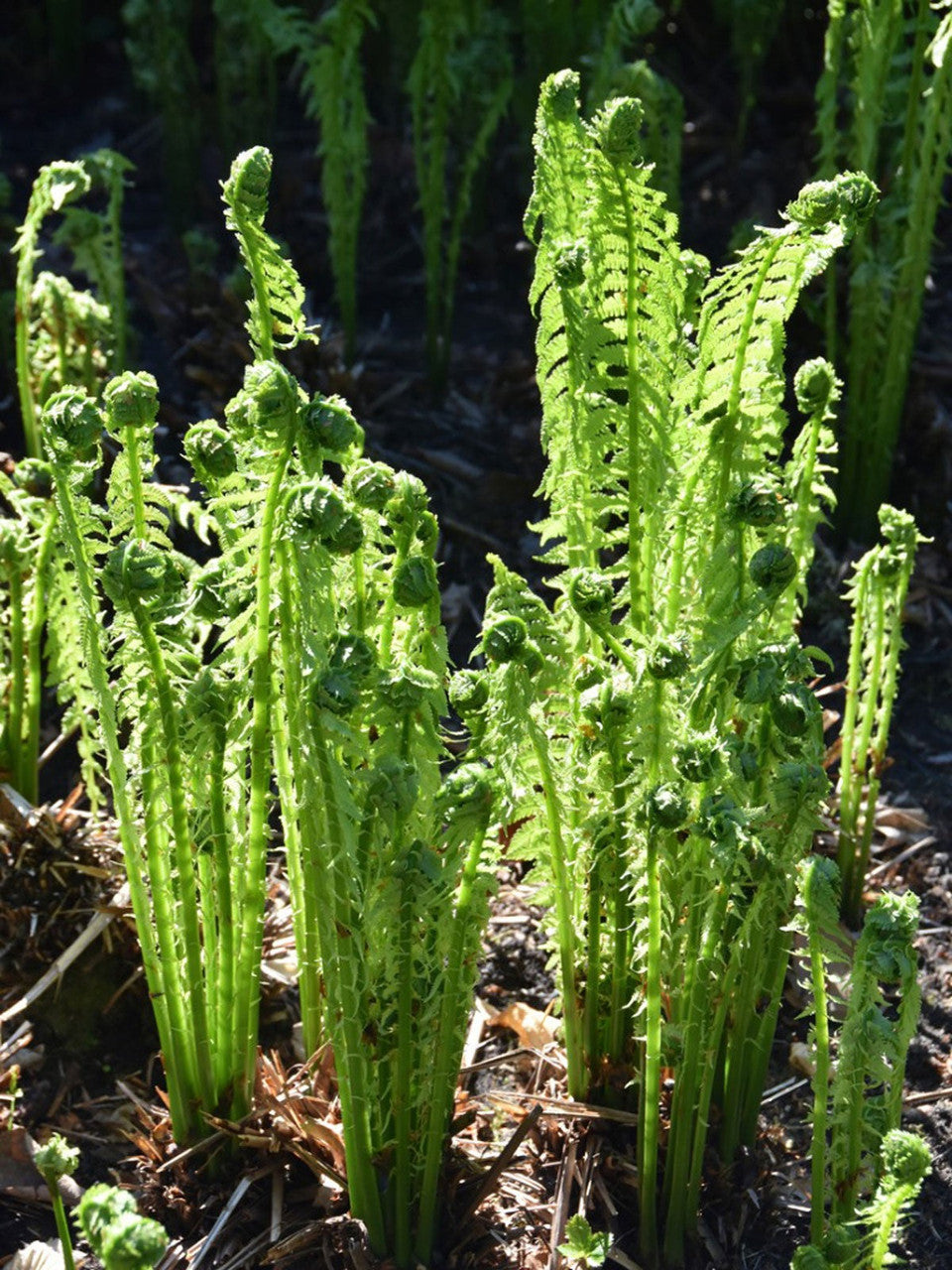
Ostrich Fern
As a perennial plant, the ostrich fern is known for its showy and elegant fronds, which resemble the plumes of an ostrich, hence its name. In early spring, ostrich ferns produce tightly coiled fiddleheads that slowly unfurl into arching, feather-like fronds that can reach heights of three to six feet. These fronds have a vibrant green color and a soft, airy texture that adds a touch of depth and movement to any garden or landscape. The ostrich fern is a dramatic and lush plant that is perfect for shaded or partially shaded areas of the garden, such as along streams, near ponds, or in damp, shaded corners of the yard. As the seasons change, the ferns remain a rich green throughout the summer and then transition to warm golden hues in the fall before fading back for the winter.
The ostrich fern is a low-maintenance plant that is relatively easy to care for once established in the right location. It prefers consistently moist, rich soil and can tolerate partial shade to full shade. Ostrich ferns are adaptable and can thrive in various soil types as long as the soil is well-drained and retains moisture. These ferns require regular watering, especially during dry spells, but established plants are quite resilient and can tolerate brief periods of drought. Ostrich ferns also have the tendency to spread and form colonies over time, as the plants spread by means of their underground rhizomes. Dense colonies of ostrich fern plants can be used as a form of groundcover in areas where it is desired to quickly fill in a large area with ferns in order to prevent weeds.
An unexpected bonus to ostrich fern plants is that they are also edible. If one is so inclined, ostrich fern fiddleheads can be harvested in the early spring and used as a food source. Fiddleheads from ostrich ferns are a popular seasonal food due to their mild, earthy flavor. While these ferns are technically edible, it is crucial that any part of the plant intended for consumption is cooked before it is eaten.
Ferns such as ostrich ferns have many unexpected benefits when it comes to their contribution to the ecological health of one’s garden. Thick masses of these plants provide cover and shelter for various small wildlife and they also help the soil retain moisture, leading to a more balanced and diverse microenvironment. Ostrich fern plants could even be part of a multilayered scheme of pollinator-friendly and wildlife-supportive plantings that also incorporate other shade-tolerant flowers and shrubs as well as native plant species.
In conclusion, it is clear to see that ostrich ferns make excellent choices for gardeners of all skill levels. This showy, low-maintenance and resilient plant is ideal for areas of one’s outdoor space that are shaded. Ostrich ferns can provide vertical interest and texture to one’s garden while also adding seasonal variety and helping to reduce the amount of work that is required to care for an outdoor area in the long run. Planted as a solitary specimen or encouraged to naturalize as a majestic fern glen, ostrich fern is a grace that is the equal of few. Ostrich ferns in the garden can not only look good but can improve the health, diversity, and four season appeal of your yard.




